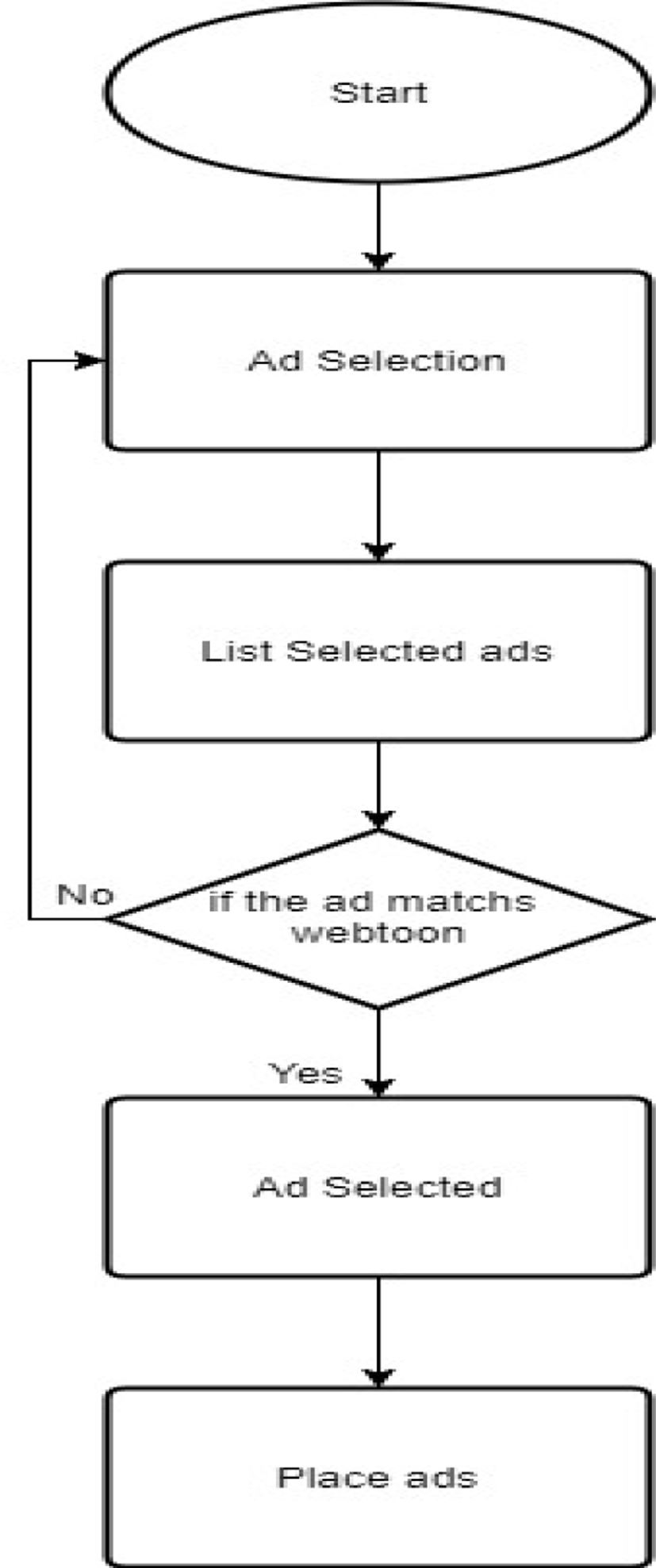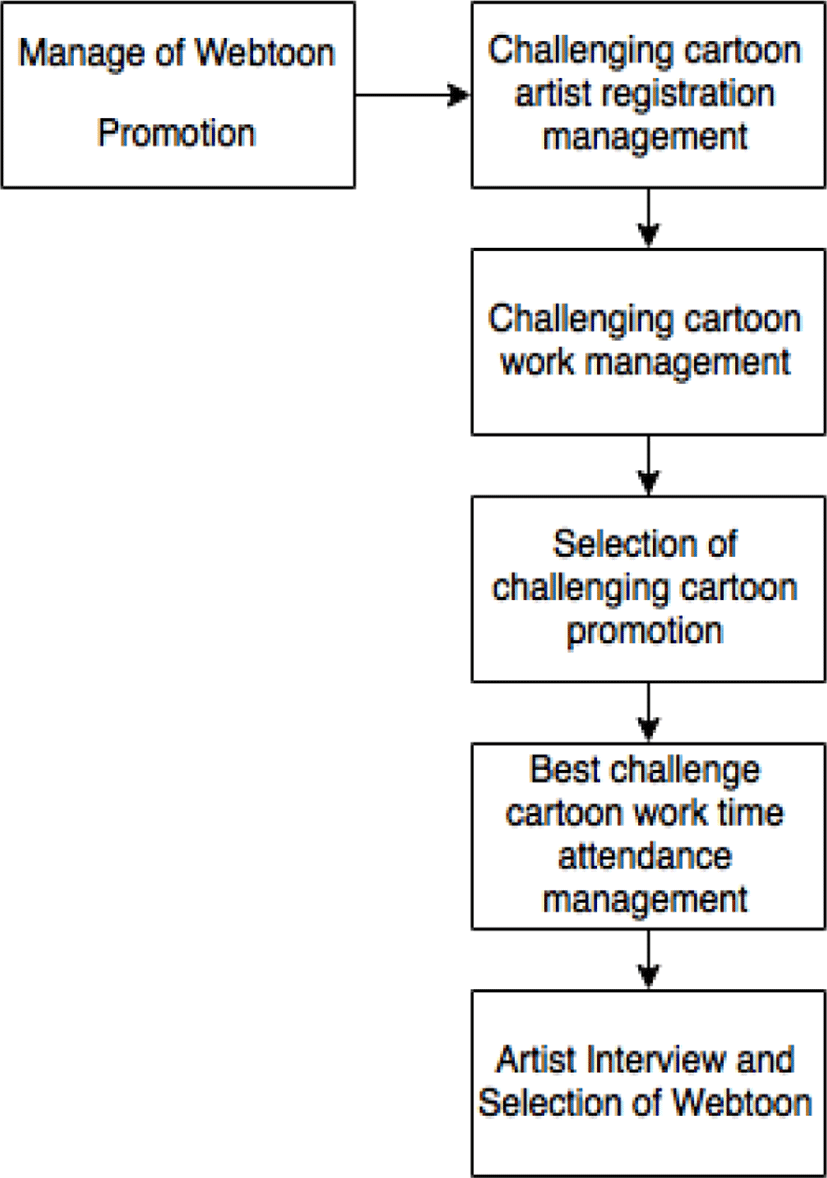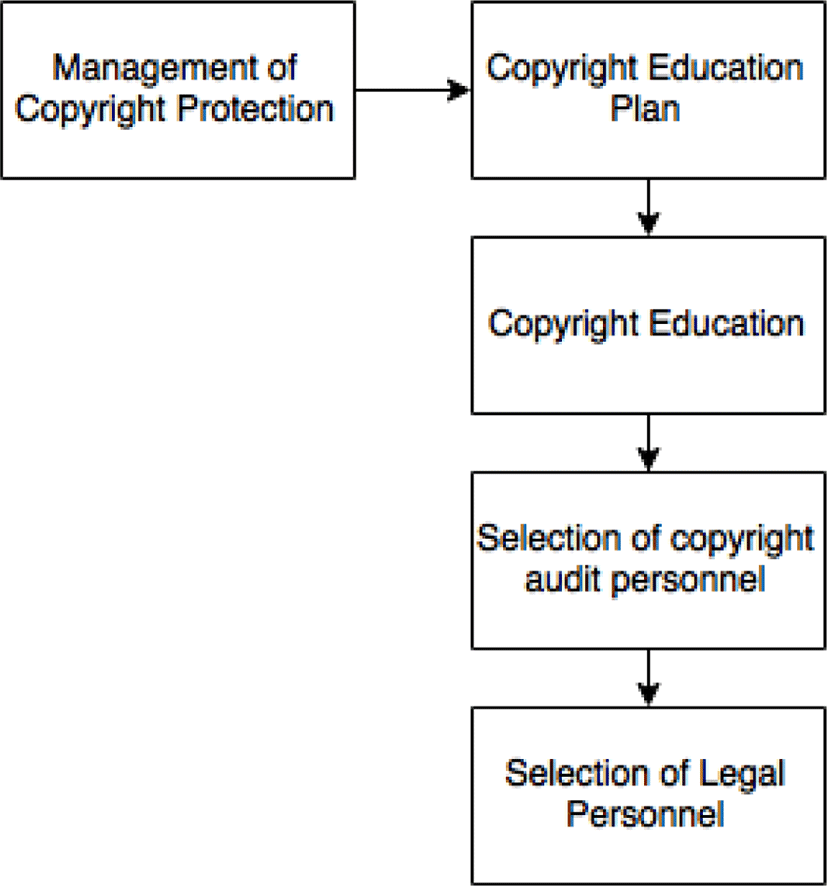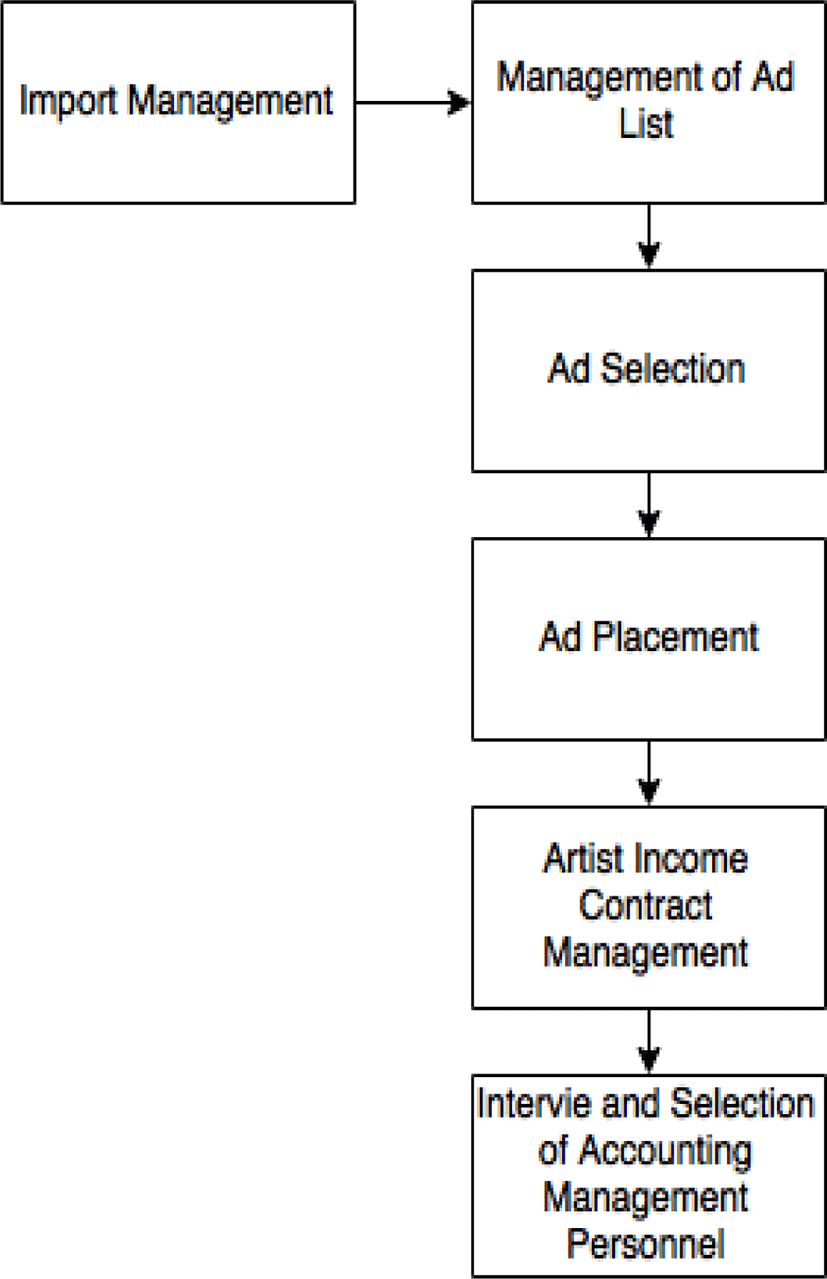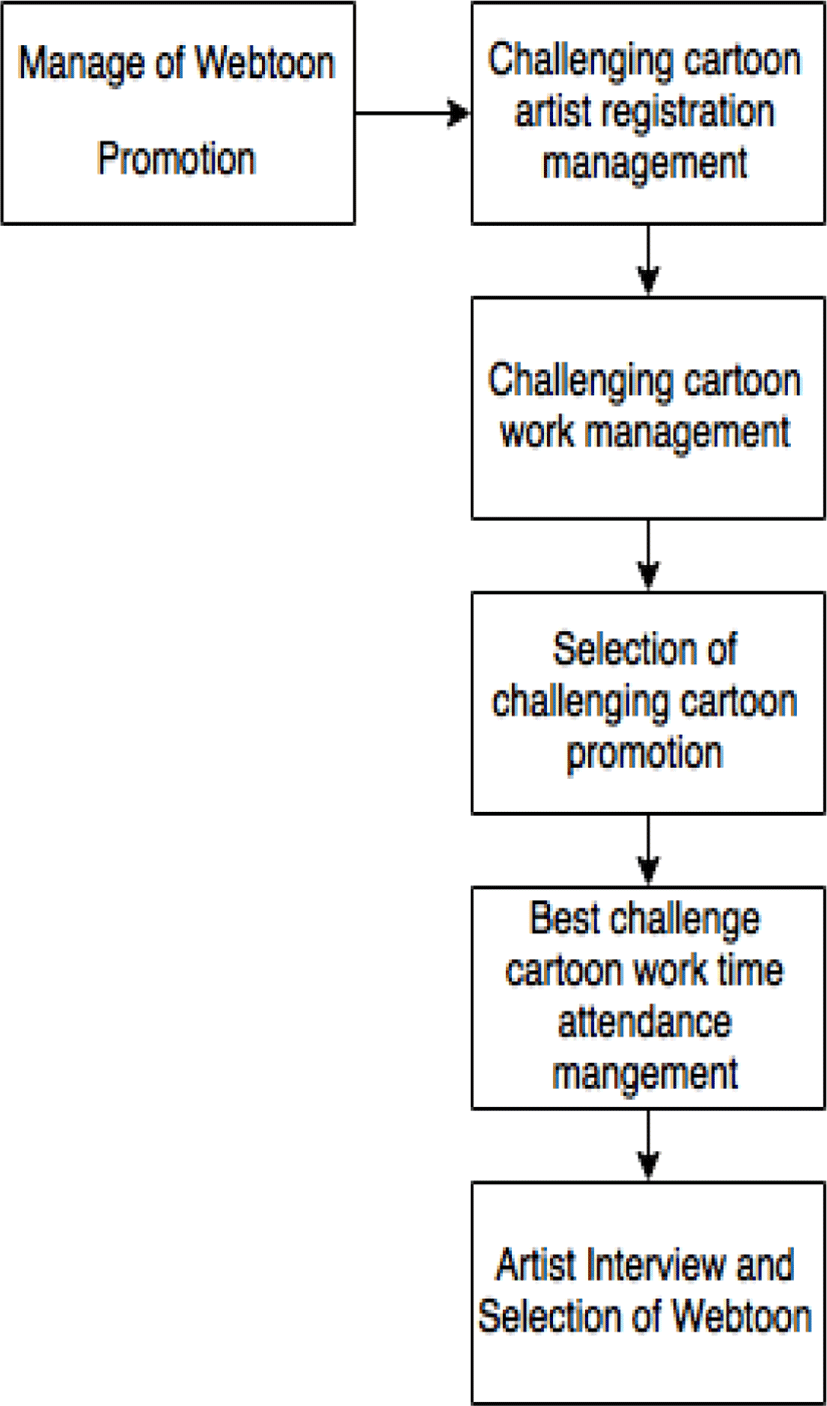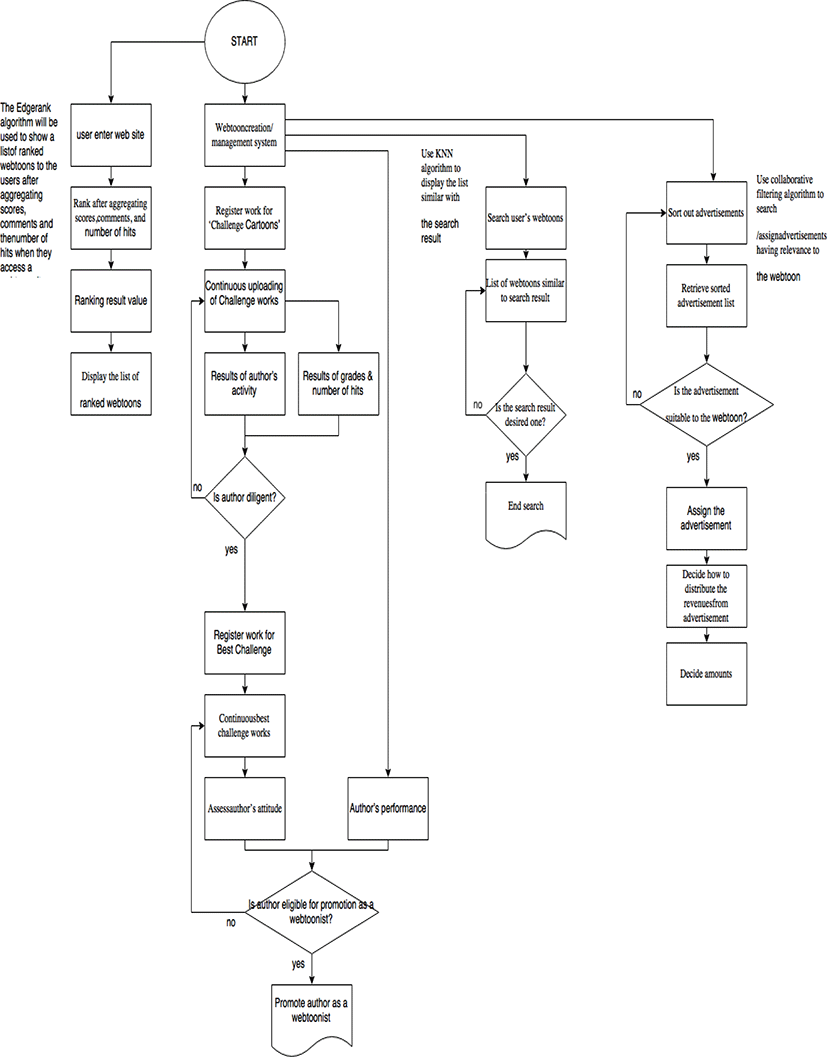I. INTRODUCTION
The number of the webtoon subscribers is rapidly increasing in the Republic of Korea (ROK) as well as the revenues of the major cartoonists. Although webtoon uploaders (cartoonists) devote their efforts to collect more scores for their works to advance to a higher ranking, it has not been easy for them to conveniently manage all the elements involved in revenues, copyrights and other requirements for their works to be promoted [1-3].
One of the typical channels of subscriber inflow has been the recommendations made by the webtoon readers around the subscriber him/herself but the current recommendation systems do not adequately refelect individual cartoonist’s performance for the promotion or the ranking. The promotion management system introduced in this study will improve existing system and enhance copyright protection through copyright education program and legal supports. This system will also focus on managing the quality and marketability of the works by using the scores given to the readers’ comments as a major index of assessment for the uploaded works.
II. RELATED WORK
In the ROK, the webtoons uploaded on the portals provided by Naver or Daum (Kakao) company are subjected to assessment based on the number of hits they get. The larger the number, the higher the rank the cartoonist will get. The basic Edgerank algorithm used here determines which post will be shown in what order on the individual user’s newsfeed screen and the typical elements involved in this process are intimacy, weight, and timeliness [4-6].
While the intimacy refers to the level of relationship determined based on the scores given to the postings (likes, dislikes) or the frequency of comments, the weight is the score given to each post. It is most likely that the posting with a higher level of intimacy or a large number of comments or sharing will appear on the user’s newsfeed. The timeliness indicates the distance between the time of individual post publishing and the time of user’s login. The organic reach of a certain post will be increased more when the distance becomes shorter.
The K-Nearest Neighbor (KNN) algorithm is a method of predicting a value by using the k number of most similar data among existing data. In short, it allocates uncategorized record as a record having the most similar attributes among the categorized records [6-8].
Lastly, the basic idea of a collaborative filtering algorithm is to assume that there is a user purchase pattern. The user-based method or the item-based method is mainly used for the collaborative filtering. The former (latter) is to perform a prediction based on the purchase record (purchase item) of a user similar to the target user’s purchase records (purchase items) after calculating the similarity between users (items).
The following method will be applied to the items proposed in this study. That is, recommending the most typical webtoons by arranging/sorting them based on the scores given to the number of hits, comments, and grades by using an Edgerank algorithm. Figure 1 is a flowchart of the Edgerank algorithm used
Also, by using the KNN algorithm, the recommendations will be made for the readers with the webtoons they would like based on the genre and characteristics of webtoons they usually like to read. Figure 2 is a flowchart of the KNN algorithm.
Finally, we attempt to allocate an advertisement that has a similar characteristic with a specific webtoon to that webtoon by using a collaborative filtering algorithm
This study aims to manage the webtoon system more efficiently with above algorithms.
III. A DESIGN OF WEBTOON PROMOTION MANAGEMENT SYSTEM
The new cartoonists first register themselves for the ‘Challenge Cartoons’ level and then they diligently work to clear certain requirements of the scores, grades or the number of hits. At the same time, they will need to select some of their best pieces to advance to the ‘Best Challenges’ level.
At this point, the system assesses whether the cartoonists are genuinely working hard and after that, it selects some of the popular cartoons in the ‘Best Challenge’ level and interviews respective authors to directly check if they can faithfully keep the requirements when their works have been actually uploaded for the public view. The final judgment is made after completing these procedures. Figure 4 is a structure of the webtoon promotion system proposed.
There are times when authors make mistakes as they do not fully understand about copyrights so that in order to prevent such mistakes, a schedule will be made for them to receive copyright education on their available time. Also, by recruiting copyright inspection staff, their works will be reviewed for the possibility of copyright infringement, along with some legal staff to provide legal service when their works have been violated by the others. Figure 5 is a structure of the webtoon copyright management system.
First, the webtoon service management staffs will be recruited to assume the task of managing scores, grades, comments, publishing dates, and age restrictions. Meanwhile, the staff who will be responsible for handling individual authors are selected after the interview and assigned to them to manage their schedules and decide when the works can be published online after discussing with the service team. The management process includes how many episodes will be published or when the series will end/suspended. [Figure 6] is a webtoon service system management structure proposed.
The accounting staff who will be managing the revenues arising from the webtoons is recruited after the interview to assess their capability and personality. The accounting team registers and manages the list of scheduled advertisements for final selection. The service team will then tie up the selected advertisements with the webtoons that would produce the best results. The accounting team also manages an annual salary contract with each author who will receive a raise based on the number of hits and scores calculated. Figure 7 is a webtoon revenue management system structure whereas Figure 8 is a webtoon promotion management system design.
IV. CONCLUSION AND FUTURE WORKS
In this study, a more optimized webtoon arrangement system was presented for a smooth service operation and use. The Edgerank algorithm allows users to easily access webtoons by recommending popular ones by showing them their ranks based on the number of hits, scores, grades, and comments. Also, with the KNN algorithm, this program offers the convenience to the users by recommending the webtoons similar to the ones with user-preferred genre and elements based on their past webtoon viewing records. Meanwhile, the collaborative filtering allows the advertisements to be tied up the webtoons that make the most out of advertising impact. The quality of webtoons can be increased by objectifying the webtoon promotion management system. Adding the copyright protection function will a more active webtoon service.
Based on this study, our future work will focus on the construction of an efficient webtoon creation/management system that will maximize the revenues from the advertisements through systematic selection


